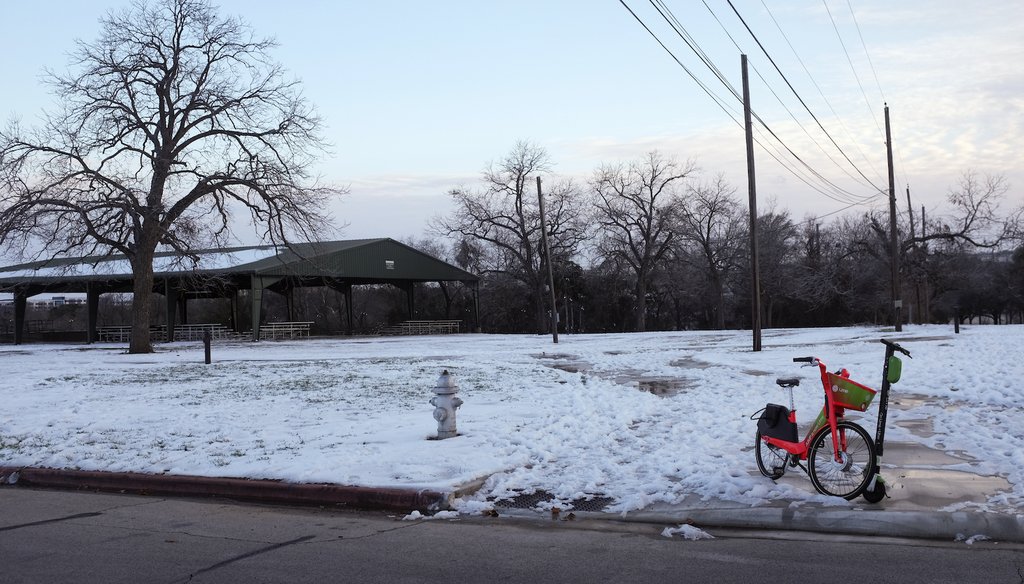Get PolitiFact in your inbox.

A snow-covered park in Austin, Texas. (AP)
No, the snow isn’t government-generated. This is what a snowball does when you take a lighter to it.
If Your Time is short
• Ice and snow have different physical properties. Snowballs initially don’t appear to melt in the presence of heat because the water gets absorbed into the remaining snow.
• The butane fueling most lighters produces soot, which plates itself over snowballs, making it appear as if the snowballs are turning black.
As strange winter weather brought frigid temperatures and snowfall as far south as Houston, some social media users were claiming that there’s something strange about the snow itself.
A series of videos posted to Facebook show social media users holding snowballs over lighters. To their surprise, the snowballs don’t melt away, but begin to develop black scorch marks.
"It’s not even melting!" one user exclaims. "It’s just turning black!"
The users posit various explanations for this phenomenon: "fake snow," alien technology, a simulated reality, and a massive government conspiracy.
"Anyone playing with the government-generated snow yet?" reads a caption on one of the videos.
We took a cold, hard look at these theories, and found that science has a better explanation.
Astronomer and science blogger Phil Plait described it in a Slate article and accompanying video.
Many of the users seem to expect the snowball to melt away from the lighter flame as an ice cube would. However, ice and snow have distinct physical properties, which leads them to react to heat differently.
Snow consists of frozen water droplets that have fallen to Earth. When snow is compressed into snowballs, there’s a lot of space between the crystals, making them soft and porous.
Featured Fact-check
Ice is denser and more rigid, with less space between the frozen water molecules. When an ice cube melts, there’s no space for the water droplets to go, so they end up dripping away.
"Think of ice like a glass window, where water bounces off, and a snowball like a window screen, where water can get through," Plait told PolitiFact.
Here’s what’s happening in the videos: As the lighters heat up the snowballs, some of the snow begins to turn to water. However, that water gets absorbed into the remaining snow, making it seem like the snowball is shrinking in size rather than melting away.
Given enough time, a snowball exposed to heat will melt into a puddle. However, the social media users hold lighters to the snowballs only long enough for black scorch marks to appear.
As for the scorch marks? Those come from the lighters themselves.
Lighters are typically fueled by butane, which is composed of carbon and hydrogen. When a lighter is flicked on, the butane molecules react with the oxygen in the air, releasing energy as heat.
However, Plait explained, the reaction isn’t perfect, and some of the carbon molecules from the butane bond with one another to form soot.
"When (soot) is made in the videos it plates itself onto the snowball making it turn black," he said.
There’s nothing strange or artificial about the snow in the videos. It’s probably best to let these claims melt away.
Pants on Fire!
Our Sources
Email interview with Phil Plait, astronomer, Feb. 19, 2021
Slate, Atlanta storm was a government conspiracy? Snow way! Feb. 3, 2014
Browse the Truth-O-Meter
More by Noah Y. Kim
No, the snow isn’t government-generated. This is what a snowball does when you take a lighter to it.
Support independent fact-checking.
Become a member!
In a world of wild talk and fake news, help us stand up for the facts.






























